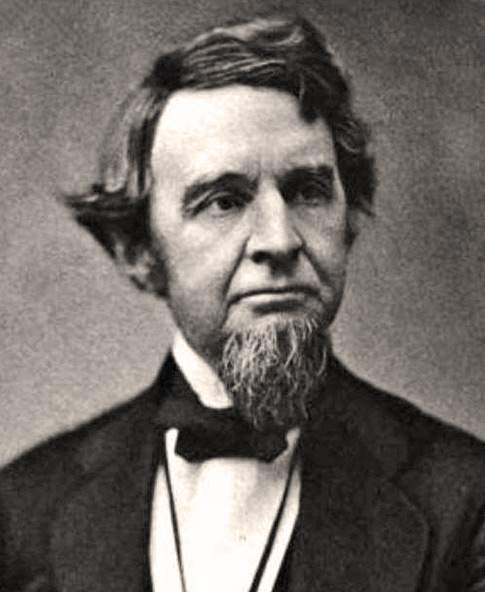An elegant three-story Federal brick town house stands on the south east corner of High and Bedford streets in Carlisle. Known as the Duncan-Stiles House, it was built c. 1811 by Carlisle attorney Thomas Duncan for the marriage of his son Stephen and his bride, Margaretta Love Stiles. After the tragic death of Stephen’s wife in 1813,1 he sold the house to his brother-in-law Benjamin Stiles.2
Benjamin Stiles was born in Bermuda in 1789, the son of James Stiles and his second wife Miss Murray, the daughter of the Governor General of Bermuda. The Stiles family moved to Philadelphia in the 1790s where Benjamin’s parents died soon after. Benjamin’s older brother, Edward James, graduated from Dickinson College, and in1808 he married Ann Duncan, the daughter of Hon. Thomas Duncan of Carlisle.
James Miller McKim, a Presbyterian minister and abolitionist, was born in Carlisle in 1810. In 1872, two years before his death, he wrote several lengthy reminiscences of the Carlisle of his youth which were published in The Carlisle Herald under the pen name A.G.C. [A Genuine Carlisler]. McKim’s descriptions of Benjamin Stiles' elegant house, his physical features, his clothing, and his lifestyle, provide a picture of a member of Carlisle society in the 1820s as remembered by him fifty years later.
Rev. McKim wrote:
“I stop in front of what 50 years ago was the grandest house in town. It is the residence of Mr. Benjamin Stiles, brother of Edward J. of the same name, and a prominent character in Carlisle society. I admire, as I have often done before, the smooth brick in the wall, the clear plate glass windows, the spotless white marble of the steps which curve up to the doorway; and the door itself with its handsomely worked panels and its polished knobs and bell pull.
Mr. Stiles himself is standing in front leaning over the iron railing and talking to his wife’s lap-dog which is frisking below.…The gable of the house, and the rear, are in their way, just as pleasing as the front, a set-back in the masonry making a sunken panel, break up what would otherwise have been the sameness of the one, while a semi-circular curve gives to the wall of the other the charm of a novel and symmetrical variety. (I can’t say how that house would strike me now, but as I recollect it, it would compare well with any three-storied brick house that I have ever seen. It is a counterpart of the old Philadelphia style houses that can still be seen on Third and Fourth Streets below Walnut.) Mr. Stiles continues to chirrup and talk to his dog. He is in no hurry. No note in bank requires his attention, nor does business of any kind anywhere cause him to be moving. It is a fine summer morning, and he is dressed to suit the season; his head bear and the flowing skirts of his seersucker waving in the wind. He is not a tall man, neither is he portly. His dark hair begins to recede from his forehead, but his somewhat florid face shows not a wrinkle of either time or care. His toilet, although it is early in the day, is perfect; on the well-fluted ruffles of his shirt bosom rests the broad end of a mantua ribbon, which served as a necktie. His waistcoat is of black and white striped silk with a rolling collar, and his pants are of black Gauton crape [sic]. Silk stockings and pumps complete his out-fit, which as a whole, marks him as a perfect specimen of the ‘par excellence’ gentleman, as that genus was known 50 years ago.
Mr. Stiles in his habits was not an anchorite. The good things of this world were not matters of indifference to him. The best cuts (of meat) from Noble’s stall found their way to his table, and fine fat poultry was nowhere so sure of a customer as at his door. Though not what would be called an active man, Mr. Stiles was useful—that is in his own way. His ample means gave him a liberal income, and this he spent with a free hand. The “butcher and baker and candlestick maker” found him an excellent customer.”3
Benjamin Stiles married Catharine Hodgeson, and they had no children. They sold their house in Carlisle in 1840 and moved to Philadelphia as did his brother Edward James Stiles. Benjamin’s wife died in 1850 and Benjamin on June 24, 1853. They are buried in Philadelphia’s Laurel Hill Cemetery.4
Painted at a later date, the splendid Duncan Stiles House is still standing, but its paint is peeling, and it is woefully in need of TLC.
